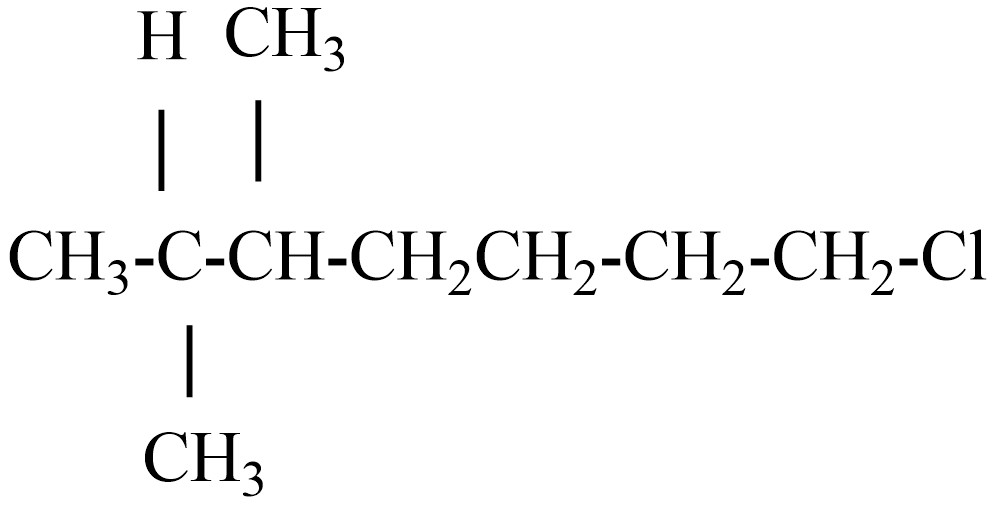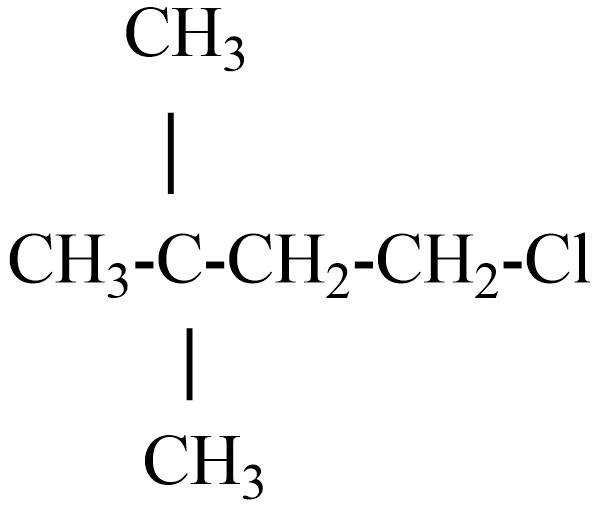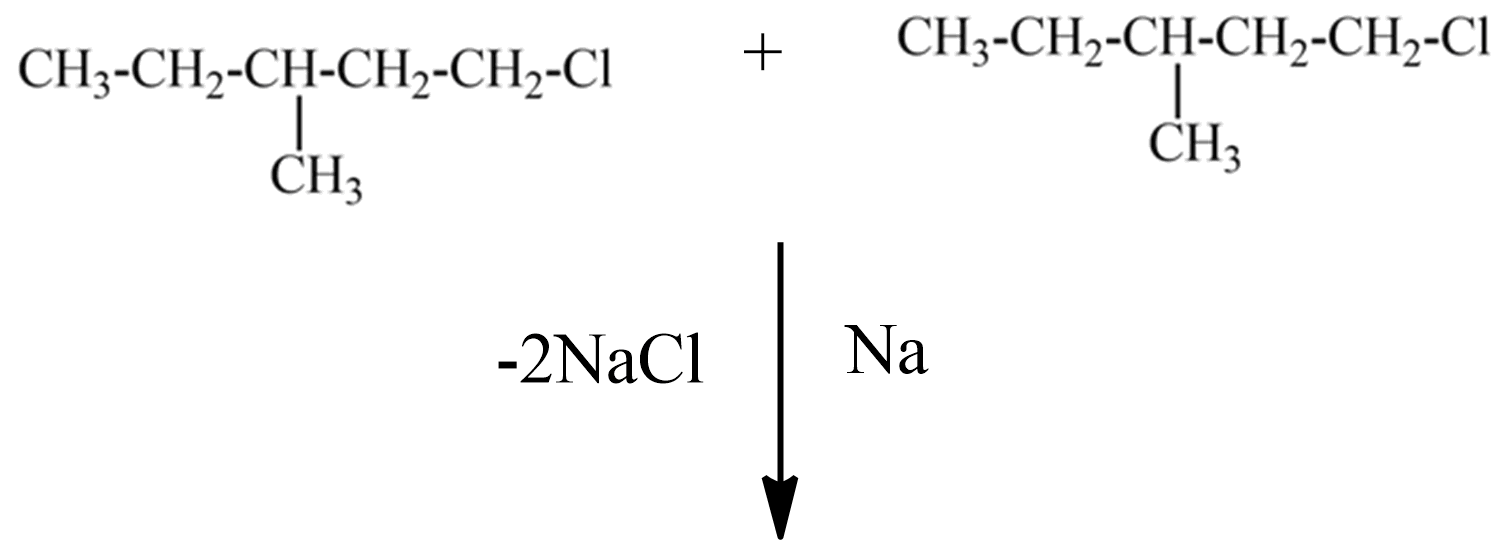
In alkyl halide X reacts with sodium to form 3,8-dimethyl decane. What is X?
(A)

(B)

(C)

(D)





Answer
566.4k+ views
Hint: Alkyl halides on treatment with sodium metal in dry ethereal (free from moisture) solution give higher alkane. This reaction is known as the Wurtz reaction and is used for the preparation of higher alkanes containing an even number of carbon atoms.
Complete answer:
According to Wurtz reaction, two metal halides react in the presence of sodium metal and dry ether solution will form higher alkanes.
Applying this statement to all compounds given and let us see with alkyl halide will give the product 3,8-dimethyl decane.
(A) the IUPAC name of this compound is chloro-3-methyl pentane.
If this compound obeys the Wurtz reaction rule, reacts with sodium metal in the presence of dry ether solution, the reaction follows,


(B) The IUPAC name of this compound is chlorobutane. If this compound obeys the Wurtz reaction rule, the product is n-octane.
(C) the IUPAC name of the given compound is chloro-2,3-dimethyl heptane.
If this compound obeys the Wurtz reaction rule, while react with Na metal the product is 2,3,8,9-tetramethyl tetradecane.
(D) The IUPAC name of this compound is chloro-2,2-dimethylbutane.
If this compound obeys the Wurtz reaction rule, while reacting with Na metal the product is 2, 2,5,5- tetramethyl octane.
From all four compounds, option A is (the correct answer) the alkyl halide X.
Note:
If two different alkyl halides are used in Wurtz reaction to prepare an alkane with an odd number of carbon atoms, a mixture of three alkanes is produced. The reason is that the two alkyl halides, in addition to reacting with each other also react among themselves giving a mixture of three alkanes.
Complete answer:
According to Wurtz reaction, two metal halides react in the presence of sodium metal and dry ether solution will form higher alkanes.
Applying this statement to all compounds given and let us see with alkyl halide will give the product 3,8-dimethyl decane.
(A) the IUPAC name of this compound is chloro-3-methyl pentane.
If this compound obeys the Wurtz reaction rule, reacts with sodium metal in the presence of dry ether solution, the reaction follows,


(B) The IUPAC name of this compound is chlorobutane. If this compound obeys the Wurtz reaction rule, the product is n-octane.
(C) the IUPAC name of the given compound is chloro-2,3-dimethyl heptane.
If this compound obeys the Wurtz reaction rule, while react with Na metal the product is 2,3,8,9-tetramethyl tetradecane.
(D) The IUPAC name of this compound is chloro-2,2-dimethylbutane.
If this compound obeys the Wurtz reaction rule, while reacting with Na metal the product is 2, 2,5,5- tetramethyl octane.
From all four compounds, option A is (the correct answer) the alkyl halide X.
Note:
If two different alkyl halides are used in Wurtz reaction to prepare an alkane with an odd number of carbon atoms, a mixture of three alkanes is produced. The reason is that the two alkyl halides, in addition to reacting with each other also react among themselves giving a mixture of three alkanes.
Recently Updated Pages
A man running at a speed 5 ms is viewed in the side class 12 physics CBSE

State and explain Hardy Weinbergs Principle class 12 biology CBSE

Which of the following statements is wrong a Amnion class 12 biology CBSE

Two Planoconcave lenses 1 and 2 of glass of refractive class 12 physics CBSE

The compound 2 methyl 2 butene on reaction with NaIO4 class 12 chemistry CBSE

Bacterial cell wall is made up of A Cellulose B Hemicellulose class 12 biology CBSE

Trending doubts
Explain sex determination in humans with line diag class 12 biology CBSE

The pH of the pancreatic juice is A 64 B 86 C 120 D class 12 biology CBSE

Which prominent US inventor was known as the Wizard class 12 social science CBSE

Which state in India is known as the Granary of India class 12 social science CBSE

Draw a ray diagram of compound microscope when the class 12 physics CBSE

When was the first election held in India a 194748 class 12 sst CBSE




